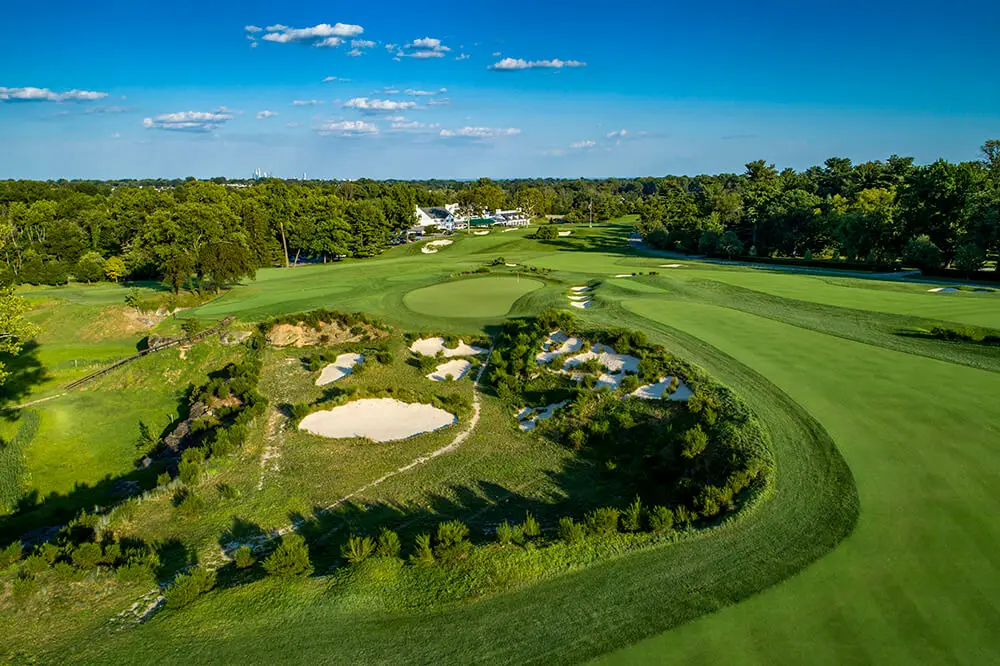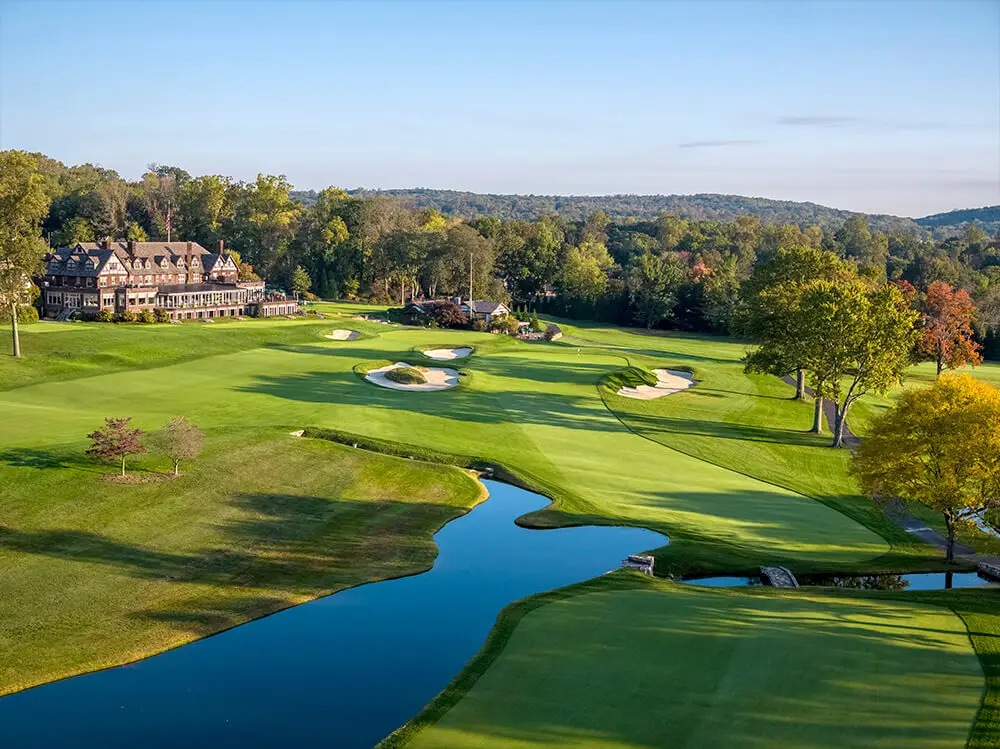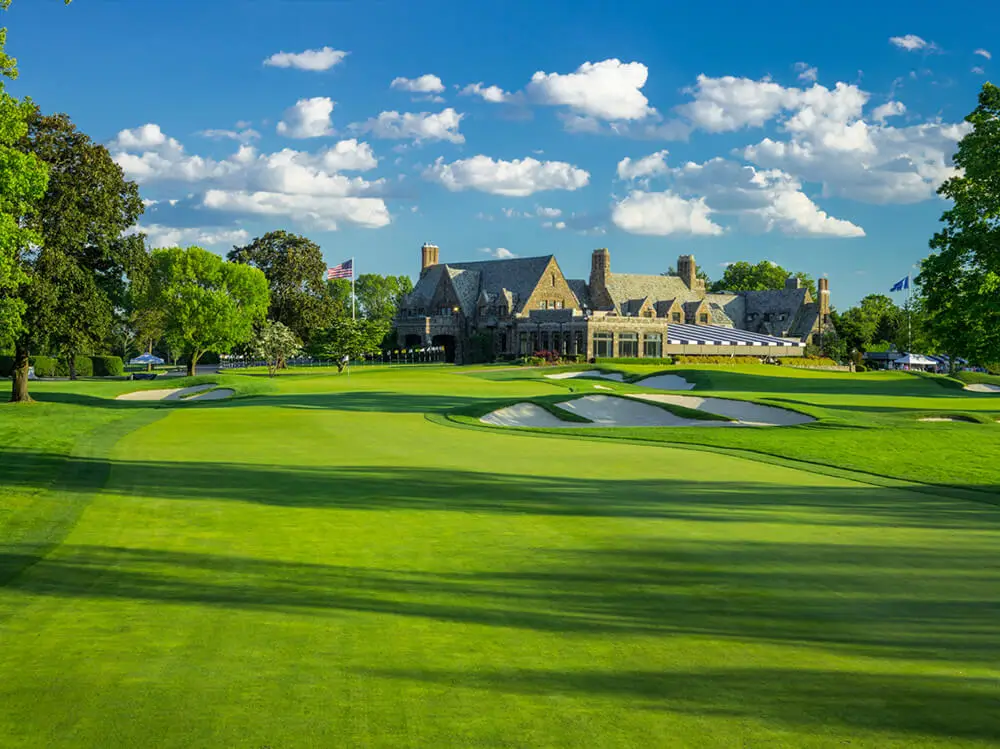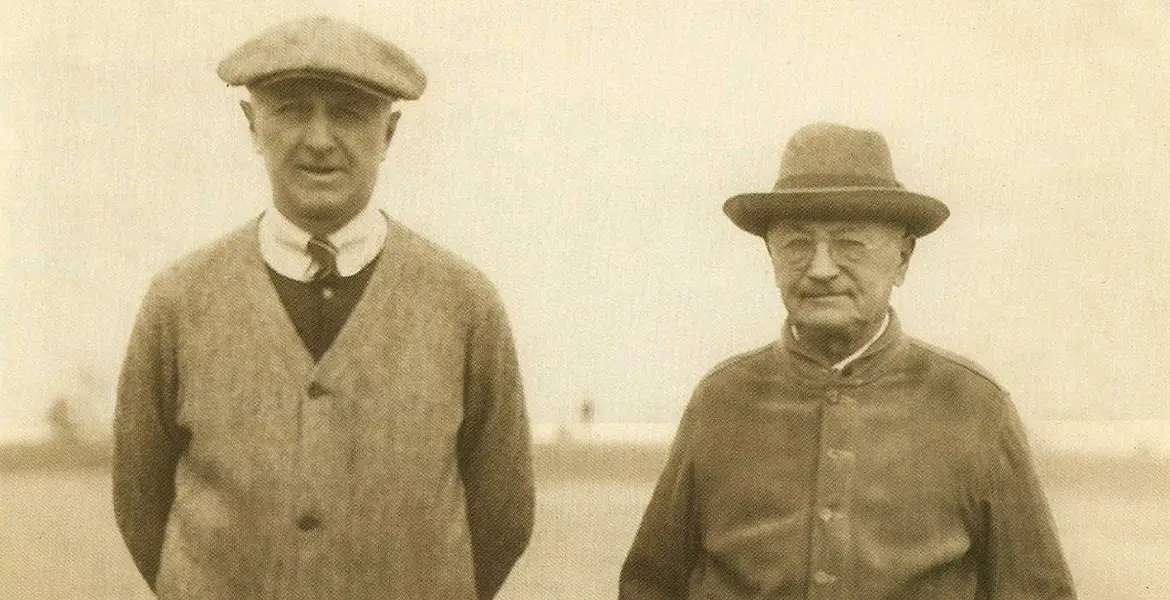The National Register of Historic Places (NRHP) has over 99,000 entries for buildings, sites, districts, objects, and structures worth preserving throughout the United States due to their local historical significance. Approximately three percent of those entries have additional, elevated status as National Historic Landmarks, representing American culture and heritage in a way that is nationally significant.
To be considered a National Historic Landmark, the property must meet specific criteria and have a high degree of integrity. The application is then reviewed by an advisory board and the ultimate decision rests with the United States Secretary of the Interior. From nomination to designation, the process can take from two to five years.

The district of Pinehurst, including the village and the resort in North Carolina, was designated as such on June 19th, 1996, for several reasons. For one, Pinehurst Resort, founded in 1895, made an impact on the growth and development of resort communities across the country. It’s also home to several internationally renowned golf courses. Donald Ross originally designed the first four, most notably its decorated No. 2 course, and Pinehurst is closely associated with him and his widespread impact on golf in America. In addition, the Village of Pinehurst was designed by the well-known landscape architecture firm of Olmsted, Olmsted & Eliot, a famous example of the pastoral landscape style.
The following four golf venues have also earned the rare designation as National Historic Landmarks.
Oakmont Country Club—Oakmont, Pa.
Designation date: June 30, 1987

Henry Clay (H.C.) Fownes was born in Pittsburgh in 1856, became an iron and steel magnate, and sold his company, the Carrie Furnace Company, to Andrew Carnegie. It is believed that Carnegie introduced Fownes to golf and he took to it wholeheartedly. Wanting a better course to play than the ones he found, Fownes built his own. That course and club is Oakmont, the first golf property to become a National Historic Landmark. It has contributed mightily to golf and through significant events, American history. Traditionally, the Oakmont membership demands excellence—the greens are lightning fast, and the Church Pew bunkers are instantly recognizable on this penal layout. Since 1919, Oakmont has hosted 17 total USGA Championships (the 2025 U.S. Open is the club’s 10th, the most of any course) and three PGA Championships.
Merion Golf Club—Ardmore, Pa.
Designation date: April 27, 1992

Bobby Jones won the U.S. Amateur at Merion, completing the Grand Slam in 1930. Ben Hogan won the U.S. Open here in 1950, making a comeback after a terrible automobile accident in February of 1949. In 1971, Lee Trevino beat Jack Nicklaus by a few strokes during an 18-hole playoff at the U.S. Open. These memorable moments, the numerous other championships hosted at Merion, and the course’s creative architecture, including innovative bunkering, are all reasons that Merion has been designated as a National Historic Landmark. Developed when golf was blossoming in the U.S., Hugh Wilson designed the East (1912) and West (1914) courses and William Flynn helped with meticulous construction. As the superintendent in 1915, Flynn received patent approval for the wicker-basket design seen in the Merion logo and also used in place of flags on the course. Merion will be further etched in history in the decades to come with three men’s U.S. Opens (2030, 2040, 2050), two U.S. Women’s Opens (2034, 2046), and the 2026 U.S. Amateur on the docket.
Baltusrol Golf Club—Springfield, N.J.
Designation date: August 25, 2014

Designed first by George Hunter and expanded by George Low, the “Old Course,” at Baltusrol hosted five championships from 1901–15 but was demolished to make way for A.W. Tillinghast’s “dual courses,” the Upper and Lower, designed and built simultaneously and opened in 1922. These courses were influential in the development of Tillinghast’s career, which is part of the reason the property was designated as a National Historic Landmark. Tillinghast was interested in providing a strategic test in a natural and beautiful setting, and his courses and the club have continued their prominence with major events and their dance with American history. Baltusrol has been host to 15 USGA Championships and three majors conducted by the PGA of America, most recently the 2023 KPMG Women’s PGA Championship held on the Lower course. Both courses have been restored in recent years by architect Gil Hanse, and Baltusrol will host again when the 111th PGA Championship will be played on the Lower in 2029.
Winged Foot Golf Club—Mamaroneck, N.Y.
Designation date: December 13, 2024

Winged Foot opened for play in June of 1923 with its own pair of championship courses designed by A.W. Tillinghast, the East and West. Likewise restored by Gil Hanse, these courses are fantastic examples of strategic design in the Golden Age of golf course construction. Clifford Wendehack, a notable architect, built the clubhouse in the Tudor-style and together, the courses and the clubhouse evoke a proud sense of history. Hosting the U.S. Open in 1929 only six years after the courses debuted, the West course is the “youngest” course to have received such an honor. Winged Foot has since hosted several more championships including six total U.S. Opens, the most recent in 2020 won by Bryson DeChambeau. Making a strong case for its place in American history and why it is deserving of National Historic Landmark status, it has also hosted the Walker Cup (1949), the PGA Championship (1997), the U.S. Amateur (1940, 2004), the U.S. Women’s Open (1957, 1972), and the U.S. Senior Open (1980).






You missed Plainfield Country Club, site of the 1777 Battle of the Short Hills, when U.S. soldiers fought for their new country for the first time under their new flag, the Stars and Stripes. Designated a US Historic Site in 2013.
There are two sites in Scotland with such a level of historic protection. St Andrews and Gleneagles. No golf courses in England and Wales have ever been awarded such an historic level of protection. However I successfully applied for a previously lost and rediscovered Harry Colt original to be protected by this registration process. The research was fully academically validated and agreed but the course was still forced to close and has now been abandoned to rewild. This despite it being the only Colt original from his 420+ global designs to have a tee box built on an island situated in the middle of a lake accessible by a footbridge.First junior golfer at the venue went onto become a Ryder Cup Captain. It is also linked to the origins of the Curtis Cup. Irrevocably linked to the creation of Augusta National through its first club professional who supported Dr Mackenzie to deliver Cavendish gc in Derbyshire that shares its origins with the home of The Masters. Created using the Colt Country Club concept where luxury properties were built around a luxury golf course layout. Its brother courses using this concept being Wentworth, St Georges Hill Ham Manor and Effingham.